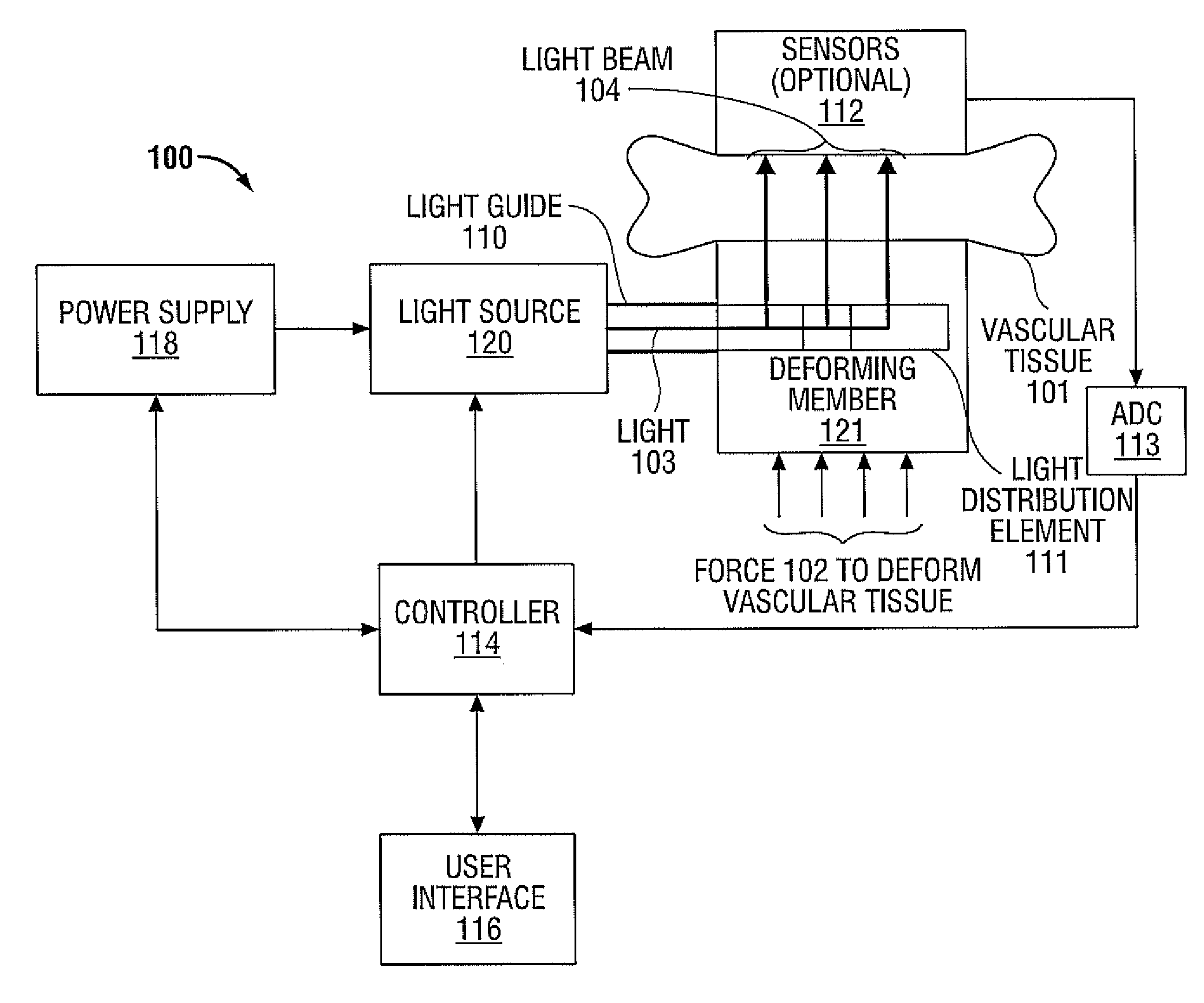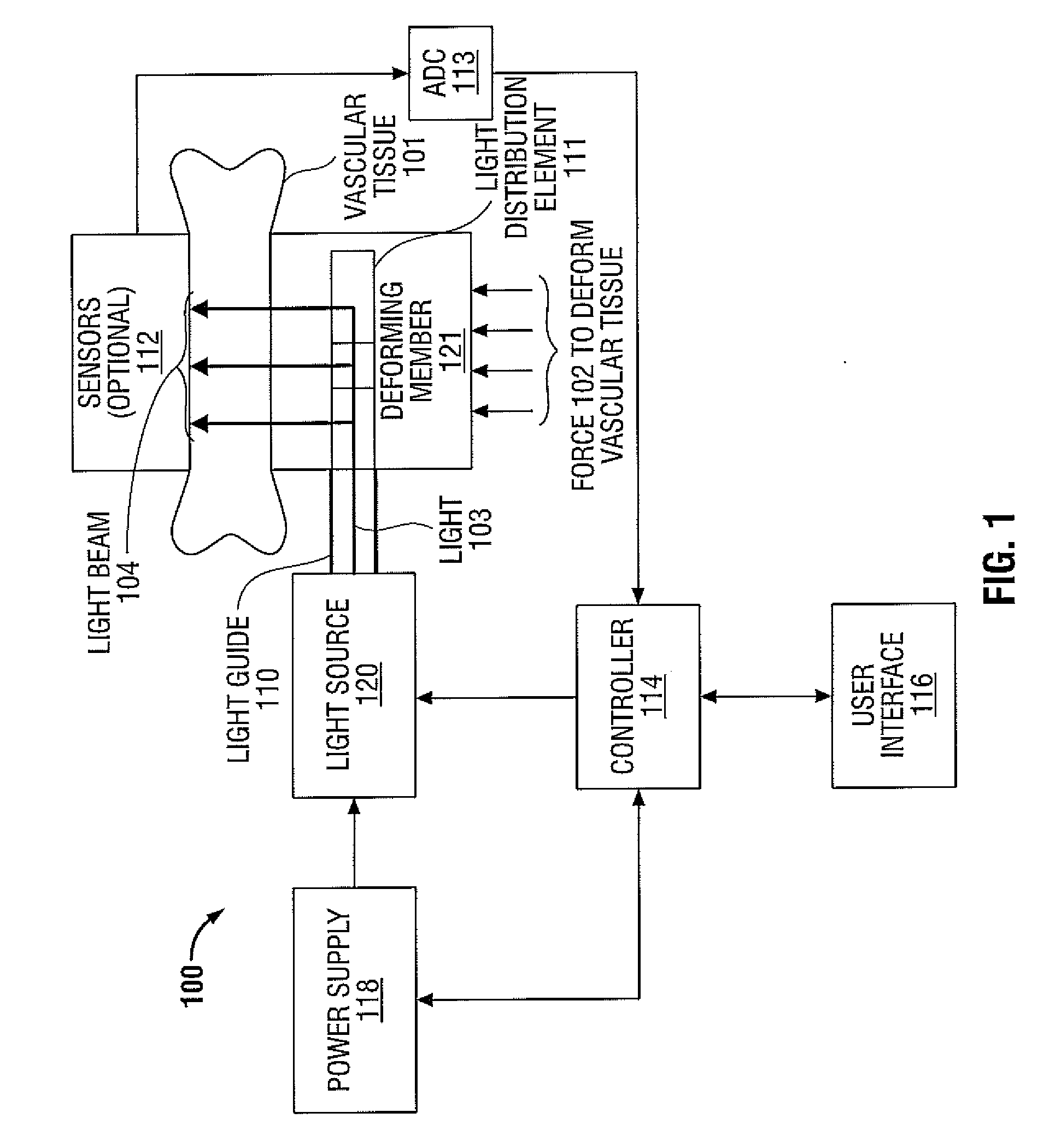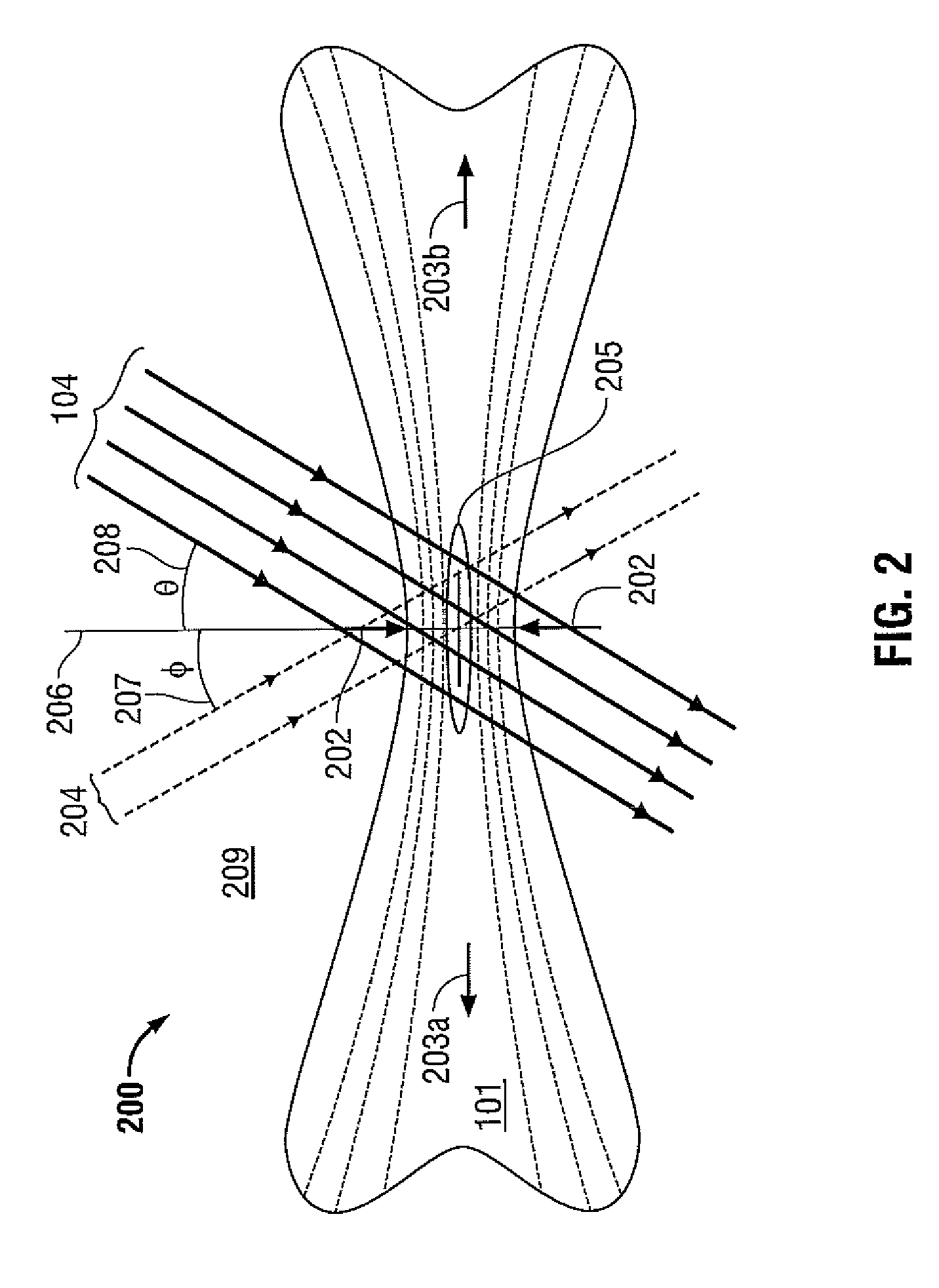Optical Energy-Based Methods and Apparatus for Tissue Sealing
a tissue sealing and optical energy technology, applied in the field of tissue sealing, can solve the problems of limiting the performance and effectiveness of existing energy-based surgical methods and systems, and limiting the surgeon's ability to control and localize tissue energy, so as to achieve efficient sealing of vascular tissue and mitigate the disadvantages
- Summary
- Abstract
- Description
- Claims
- Application Information
AI Technical Summary
Benefits of technology
Problems solved by technology
Method used
Image
Examples
Embodiment Construction
[0044]As described above, existing methods of heating and sealing vascular tissue (e.g., vessels) using electromagnetic radiation in the radio frequency (RF) range may have some drawbacks. These drawbacks may include stray currents, flashover, short circuits, the need for electrical insulation, and interference with other tissues, organs, and medical devices. Using light to heat and seal vascular tissue avoids these drawbacks while also maintaining the integrity of the tissue. The term “light” as used in the present disclosure refers to electromagnetic radiation in the infrared, visible, and ultraviolet regions of the electromagnetic spectrum.
[0045]According to embodiments of the present disclosure, tissue sealing is accomplished by deforming the vascular tissue to provide direct contact between different layers of the vascular tissue and illuminating the vascular tissue with light. Absorption of the light by the tissue causes the heating of the vascular tissue followed by the melti...
PUM
 Login to View More
Login to View More Abstract
Description
Claims
Application Information
 Login to View More
Login to View More - R&D
- Intellectual Property
- Life Sciences
- Materials
- Tech Scout
- Unparalleled Data Quality
- Higher Quality Content
- 60% Fewer Hallucinations
Browse by: Latest US Patents, China's latest patents, Technical Efficacy Thesaurus, Application Domain, Technology Topic, Popular Technical Reports.
© 2025 PatSnap. All rights reserved.Legal|Privacy policy|Modern Slavery Act Transparency Statement|Sitemap|About US| Contact US: help@patsnap.com



